- Wes Campbell uses ultra-cold atoms and molecules to learn about the physical processes that permeate our world, focusing
specifically on the physics of quantum mechanical systems that involve many-body interactions.
- Paul Hamilton explores a new direction for the field using atom interferometry to probe the properties of dark matter and dark
energy using laser-cooled atoms.
- Eric Hudson focuses on understanding and harnessing the power of quantum interactions to to enable new tests of fundamental
physics and new technology.
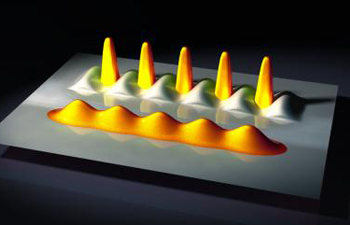 This Physics & Astronomy faculty group is active in the
discovery of novel electronic materials, correlated electron
systems, unconventional superconductivity, quantum magnetism, heavy-fermion physics, quantum critical phenomena, semiconductor physics, spintronics,
quantum statistical mechanics and field theory, topological states of matter, and Majorana fermions.
This Physics & Astronomy faculty group is active in the
discovery of novel electronic materials, correlated electron
systems, unconventional superconductivity, quantum magnetism, heavy-fermion physics, quantum critical phenomena, semiconductor physics, spintronics,
quantum statistical mechanics and field theory, topological states of matter, and Majorana fermions.
Research activities include the following areas.
- Stuart Brown investigates the roles of dimensionality, electronic correlations, and disorder in the properties of electronic materials. Most of
the systems we study are quasi-one dimensional or quasi-two dimensional crystals, and in some cases powders.
- Sudip Chakravarty's research interest involves quantum theory of collective behavior of electronic systems. He is interested in theories of
high temperature superconductivity, dissipative quantum systems, quantum phase transition and criticality, localization transition in interacting
systems, and the concept of von Neumann entropy in quantum phase transitions.
- Christopher Gutiérrez investigates the quantum properties of low-dimensional materials using atomically-resolved scanning probe and momentum-resolved photoemission
experiments.
- Karoly Holczer studies experimental condensed matter physics, organic conductors and superconductors, and electron paramagnetic resonance.
- HongWen Jiang focuses on experiments on the interactions between electrons and magnetic fields in various quantum Hall systems and electron
localization phenomena.
- Anshul Kogar studies highly nonlinear effects with ultrafast probes of materials.
- Ni Ni focuses on the characterization of physical properties and structures of materials through thermodynamic, transport, X-ray and neutron
measurements, with an emphasis on the design, synthesis, and crystal growth of new materials.
- B. Chris Regan's long term goals include a better understanding of the overlap between thermodynamics and quantum mechanics, and the construction of
a model system for the investigation of clean energy harvesting. Areas of expertise include carbon nanotubes, graphene, nanofabrication and in situ
transmission electron microscopy.
- Rahul Roy's work is in the field of condensed matter theory, which is devoted to the study of systems with many particles where quantum effects
are important. A particular theme of his research is the study of topological phases and other topological aspects of condensed matter.
- Qianhui Shi studies quantum phases of matter built from 2D van der Waals materials. Main research approaches include the designing and fabrication of novel device structures, quantum transport and capacitance measurements at low temperatures and high magnetic fields.
- Yaroslav Tserovnyak studies quantum transport and nonequilibrium dynamics in
low-dimensional electron systems, with a focus on spin and topology.
Emeritus:
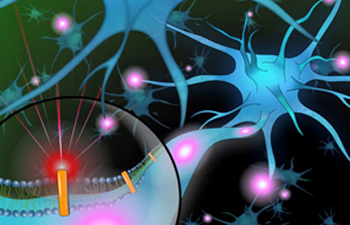 Research includes acoustic
and low temperature physics studies such as theoretical investigations into the superfluid phase transition of liquid helium and search for the phenomenon of
sonoluminescence in cryogenic liquids, such as alcohols, liquid nitrogen and liquid oxygen. The group has an active research program in microrheology,
nanoemulsions, light and neutron scattering, and microfluidics.
Research includes acoustic
and low temperature physics studies such as theoretical investigations into the superfluid phase transition of liquid helium and search for the phenomenon of
sonoluminescence in cryogenic liquids, such as alcohols, liquid nitrogen and liquid oxygen. The group has an active research program in microrheology,
nanoemulsions, light and neutron scattering, and microfluidics.
Research activities include the following areas.
- Katsushi Arisaka's prime interest is to understand the origin of the Universe, life and consciousness altogether by yet-to-be-discovered physics laws.
In particular he is interested in how the Universe evolved at its earliest stage.
- Dolores Bozovic focuses on problems at the interface between physics and sensory neuroscience.
- Robijn Bruinsma's current work concerns the application of theoretical physics and numerical modeling to molecular biology.
- Alexander Levine studies a variety of problems in the field of soft condensed matter and biophysics.
- Mayank Mehta studies fundamental questions in neurophysics.
- Jianwei (John) Miao’s research interests lie in the interplay of physics, materials science, nanoscience, and biology. He has developed
groundbreaking physical methods for high-resolution 3D imaging of nanoscale materials and biological specimens.
- Seth Putterman investigates the non-linear physics of off-equilibrium motion, including sonoluminescence from molten salts, cavitation within
gel-like materials, theory and experiment aimed at defining the intermediate model of tribo-x-ray emission, enhanced neutron emission from dense plasma
focusing, and ion-acoustic modes of long-lived dense plasmas.
- Joseph Rudnick researches a variety of problems in condensed matter physics, with primary interests in the general field of statistical mechanics.
- Shenshen Wang focuses on biophysical systems where collective responses emerge from a large and structured collection of interacting components. Two
systems of main focus are the adaptive immune system and active matter, a condensed matter system comprised of numerous self-driven subunits.
- Giovanni Zocchi focuses on the physics of macromolecules such as proteins and DNA.
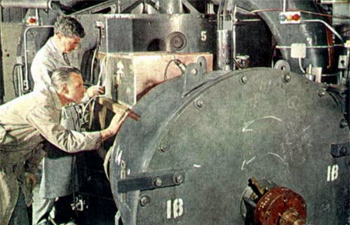 EEP is involved in experimental and theoretical research in the areas of dark matter, high-energy astrophysics (using
gamma rays, cosmic rays and neutrinos), cosmology, and physics at the Large Hadron Collider.
EEP is involved in experimental and theoretical research in the areas of dark matter, high-energy astrophysics (using
gamma rays, cosmic rays and neutrinos), cosmology, and physics at the Large Hadron Collider.
Research activities include the following areas.
- Michalis Bachtis is focused in the energy frontier of particle physics where, along with his other UCLA colleagues, he participates in the
Compact Muon Solenoid (CMS) experiment at CERN's Large Hadron Collider.
- Robert Cousins devotes essentially all of his research time to the CMS Experiment at CERN in Geneva,
along with other colleagues in the UCLA CMS Group.
- Jay Hauser researches elementary particle physics at the CMS experiment at CERN.
- Rene Ong's research focuses on the astrophysics of the high-energy Universe, as revealed by gamma rays and cosmic rays, and on the quest to
understand the nature of dark matter.
- David Saltzberg's research is conducted at the Large Hadron Collider at CERN. He has built detectors and electronics for muon detection for the Compact Muon Solenoid (CMS) detector. He is analyzing the data, looking for new physics in events with two Higgs bosons.
- Alvine Kamaha is a researcher and educator in Theoretical and Experimental physics. She is passionate about Astroparticle
Physics (Neutrino Physics and Dark Matter searches) and Science, Technology, Engineering, and Mathematics (STEM)
education and outreach geared towards the younger generation and visible minorities in STEM.
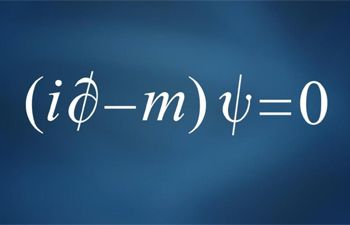 The goal of TEP is to attain
a fundamental description of the laws of physics, the constituents of matter and their interactions. Research
spans the areas of perturbative gauge theories, lattice gauge
theories, non-perturbative gauge theories, quantum gravity and string theory. With funding from DOE and NSF the group supports
several postdocs and students each year.
The goal of TEP is to attain
a fundamental description of the laws of physics, the constituents of matter and their interactions. Research
spans the areas of perturbative gauge theories, lattice gauge
theories, non-perturbative gauge theories, quantum gravity and string theory. With funding from DOE and NSF the group supports
several postdocs and students each year.
Research activities include the following areas.
- Ernest Abers studies gauge theories, supersymmetry, weak interaction phenomenology.
- Zvi Bern's primary interest is in developing new methods for calculating and understanding scattering amplitudes. He
is especially interested in applications to LHC physics and to maximally supersymmetric gauge and gravity theories.
- Eric D'Hoker focuses on quantum field theory and string theory, with applications to particle physics, and occasionally
to condensed matter physics and mathematics.
- Thomas Dumitrescu's research spans many aspects of quantum field theory, including applications to particle and condensed
matter physics, as well as supersymmetry, string theory, and mathematical physics. He is particularly interested in developing
new theoretical tools for analyzing strongly-coupled quantum field theories, which are beyond the reach of conventional
perturbation theory.
- Sergio Ferrara's main research interests are in modern theories of gravitation and unification of fundamental
interactions through the principle of symmetries.
- Robert Finkelstein has been applying quantum groups to investigate weak deformations of quantum mechanics and quantum
field theory.
- Christian Fronsdal's research involves investigations in general relativity, hydrodynamics, and thermodynamics.
- Michael Gutperle's research is focused on theoretical particle physics, quantum gravity and string theory.
- Per Kraus works on problems involving quantum field theory, string theory, classical and quantum gravity. These frequently
involve black holes and the AdS/CFT correspondence.
- Terry Tomboulis' current interests are focused on nonperturbative aspects of field theory such as the infrared behavior of
QCD and the phenomenon of quark confinement.
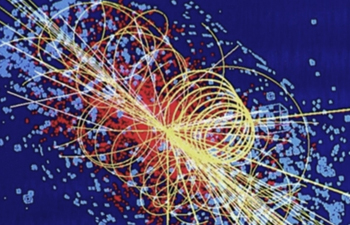 The goal of theoretical
particle physics is to attain a fundamental description of the laws of physics, the constituents of matter and their
interactions. Physicists believe that the Standard Model (SM) of elementary particles must be part of a more fundamental
theory of nature beyond the Standard Model. The search for new physics is the major thrust of current research in particle
physics.
The goal of theoretical
particle physics is to attain a fundamental description of the laws of physics, the constituents of matter and their
interactions. Physicists believe that the Standard Model (SM) of elementary particles must be part of a more fundamental
theory of nature beyond the Standard Model. The search for new physics is the major thrust of current research in particle
physics.
Research activities include the following areas.
- Graciela Gelmini has been working on astro-particle physics, especially in the problem of dark matter,
where she has studied different dark matter particle candidates. She is also interested in different aspects of the physics
of neutrinos.
- Alexander Kusenko works on a broad range of topics in elementary particle physics, astrophysics, and cosmology.
- Roberto Peccei has been mainly working on B and K physics, in particular the physics of heavy quark decays,
B meson mixing, and CP violation. He has been also interested in various aspects of electroweak interactions and
dynamical mass generation.
- Terry Tomboulis' current interests are focused on nonperturbative aspects of field theory such as the infrared behavior of
QCD and the phenomenon of quark confinement.
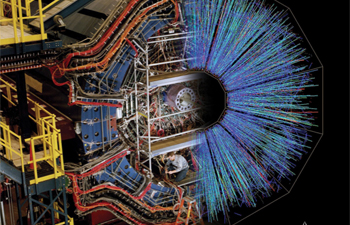 The nuclear physics research is
focused on understanding the matter composed of quarks and gluons as described by Quantum Chromodynamics (QCD), which makes up
99% of the visible mass of the universe; as well as the fundamental nature of the neutrinos. Current research includes both
experimental nuclear physics and theoretical nuclear physics.
The nuclear physics research is
focused on understanding the matter composed of quarks and gluons as described by Quantum Chromodynamics (QCD), which makes up
99% of the visible mass of the universe; as well as the fundamental nature of the neutrinos. Current research includes both
experimental nuclear physics and theoretical nuclear physics.
Research activities include the following areas.
- Huan Huang study the properties of the QCD matter at extremely high energy density and temperature and investigate the
QCD spin structure functions of the proton.
- Zhongbo Kang's interests are primarily in Quantum Chromodynamics (QCD) and strong
interaction, and their applications in high energy nuclear and particle physics, with main research efforts in QCD structure of the
nucleon, QCD collider physics, and heavy ion physics.
- Chun Wa Wong's interests include nuclear forces and nuclear properties, quark and Skyrmion models of hadrons, and
cross sections for Pomeron exchange and dibaryon production.
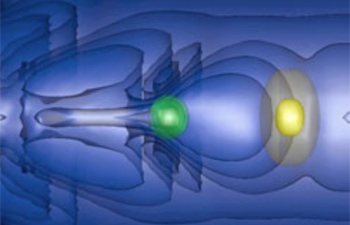 Beam physics is a vibrant,
cross-disciplinary enterprise, which intersects heavily with high-energy density science, plasma physics, ultra-fast lasers,
nonlinear dynamics and various high-field/high-power technologies. Areas of study include basic plasma physics, fusion research,
space plasma physics, laser-plasma interactions, and advanced accelerators.
Beam physics is a vibrant,
cross-disciplinary enterprise, which intersects heavily with high-energy density science, plasma physics, ultra-fast lasers,
nonlinear dynamics and various high-field/high-power technologies. Areas of study include basic plasma physics, fusion research,
space plasma physics, laser-plasma interactions, and advanced accelerators.
Research activities include the following areas.
- Troy Carter's research involves experiments in laboratory plasmas and seeks to understand phenomena relevant to
magnetic confinement fusion energy and to astrophysical plasmas.
- Neal A. Crocker is involved in cutting edge fusion research at multiple fusion
research facilities both in the US and around the world.
- Walter Gekelman studies microscopic phenomena on the fast electron time scales (e.g., electron plasma waves,
cyclotron radiation) to the slow time scales characteristic of plasma transport driven by drift‐wave turbulence
and long wavelength magnetic fluctuations.
- George Morales pursues research in plasma physics, nonlinear waves, heating of thermonuclear fusion plasmas,
ionosphere modification, laboratory simulation of space phenomena, and non-diffusive transport.
- Pietro Musumeci researches laser technology to provide high quality, ultra-short particle beams from compact accelerators.
- Warren Mori develops and uses state-of-the-art simulation tools to study laser and beam interactions in high
energy density plasmas.
- Christoph Niemann studies high energy density plasmas.
- James Rosenzweig's studies includes the creation of ultra-fast, high-brightness electron beams; the application
of such beams to advanced accelerators using lasers and/or plasmas; the creation of new types of light sources,
such as free-electron lasers and inverse-Compton scattering sources based on high brightness electron beams.
- Derek Schaeffer researches experiments and numerical simulations of strongly-driven magnetized plasma interactions relevant to astrophysical systems, inertial fusion energy, and high-energy-density plasmas, with emphasis on novel diagnostic techniques.
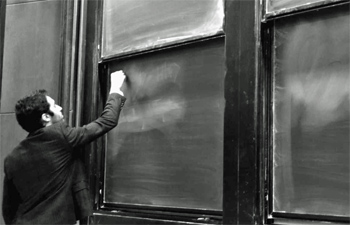 The science of teaching and learning
is a multidisciplinary field that attempts to illuminate the mechanisms underlying human learning in an effort to optimize education.
Our research at UCLA focuses on how course design decisions impact student application and retention of physics and mathematics skills.
The science of teaching and learning
is a multidisciplinary field that attempts to illuminate the mechanisms underlying human learning in an effort to optimize education.
Our research at UCLA focuses on how course design decisions impact student application and retention of physics and mathematics skills.
Research activities include the following areas.
- Josh Samani's doctoral research was in high-energy physics and centered on
aspects of holography -- the AdS/CFT correspondence in particular.
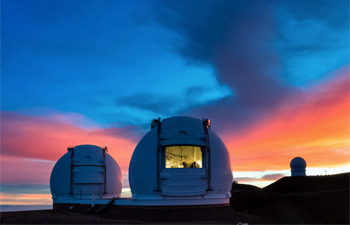 Groundbreaking research, cutting-edge
technology, award-winning faculty – UCLA’s Division of Astronomy & Astrophysics offers a rewarding environment to pursue higher education
and topical research. All members of the Division carry out active research programs that garner widespread international recognition.
Doctoral students can participate in a variety of research projects.
Groundbreaking research, cutting-edge
technology, award-winning faculty – UCLA’s Division of Astronomy & Astrophysics offers a rewarding environment to pursue higher education
and topical research. All members of the Division carry out active research programs that garner widespread international recognition.
Doctoral students can participate in a variety of research projects.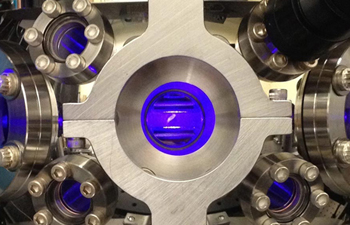 The UCLA AMO group
develops methods to bring new forms of quantum matter under control and uses existing systems to
demonstrate new technologies and measurements. Goals include understanding quantum magnetism using
quantum information protocols in trapped ions, and developing new methods for producing ultracold molecules and molecular ions.
The UCLA AMO group
develops methods to bring new forms of quantum matter under control and uses existing systems to
demonstrate new technologies and measurements. Goals include understanding quantum magnetism using
quantum information protocols in trapped ions, and developing new methods for producing ultracold molecules and molecular ions. This Physics & Astronomy faculty group is active in the
discovery of novel electronic materials, correlated electron
systems, unconventional superconductivity, quantum magnetism, heavy-fermion physics, quantum critical phenomena, semiconductor physics, spintronics,
quantum statistical mechanics and field theory, topological states of matter, and Majorana fermions.
This Physics & Astronomy faculty group is active in the
discovery of novel electronic materials, correlated electron
systems, unconventional superconductivity, quantum magnetism, heavy-fermion physics, quantum critical phenomena, semiconductor physics, spintronics,
quantum statistical mechanics and field theory, topological states of matter, and Majorana fermions.  Research includes acoustic
and low temperature physics studies such as theoretical investigations into the superfluid phase transition of liquid helium and search for the phenomenon of
sonoluminescence in cryogenic liquids, such as alcohols, liquid nitrogen and liquid oxygen. The group has an active research program in microrheology,
nanoemulsions, light and neutron scattering, and microfluidics.
Research includes acoustic
and low temperature physics studies such as theoretical investigations into the superfluid phase transition of liquid helium and search for the phenomenon of
sonoluminescence in cryogenic liquids, such as alcohols, liquid nitrogen and liquid oxygen. The group has an active research program in microrheology,
nanoemulsions, light and neutron scattering, and microfluidics. EEP is involved in experimental and theoretical research in the areas of dark matter, high-energy astrophysics (using
gamma rays, cosmic rays and neutrinos), cosmology, and physics at the Large Hadron Collider.
EEP is involved in experimental and theoretical research in the areas of dark matter, high-energy astrophysics (using
gamma rays, cosmic rays and neutrinos), cosmology, and physics at the Large Hadron Collider.  The goal of TEP is to attain
a fundamental description of the laws of physics, the constituents of matter and their interactions. Research
spans the areas of perturbative gauge theories, lattice gauge
theories, non-perturbative gauge theories, quantum gravity and string theory. With funding from DOE and NSF the group supports
several postdocs and students each year.
The goal of TEP is to attain
a fundamental description of the laws of physics, the constituents of matter and their interactions. Research
spans the areas of perturbative gauge theories, lattice gauge
theories, non-perturbative gauge theories, quantum gravity and string theory. With funding from DOE and NSF the group supports
several postdocs and students each year.  The goal of theoretical
particle physics is to attain a fundamental description of the laws of physics, the constituents of matter and their
interactions. Physicists believe that the Standard Model (SM) of elementary particles must be part of a more fundamental
theory of nature beyond the Standard Model. The search for new physics is the major thrust of current research in particle
physics.
The goal of theoretical
particle physics is to attain a fundamental description of the laws of physics, the constituents of matter and their
interactions. Physicists believe that the Standard Model (SM) of elementary particles must be part of a more fundamental
theory of nature beyond the Standard Model. The search for new physics is the major thrust of current research in particle
physics. The nuclear physics research is
focused on understanding the matter composed of quarks and gluons as described by Quantum Chromodynamics (QCD), which makes up
99% of the visible mass of the universe; as well as the fundamental nature of the neutrinos. Current research includes both
experimental nuclear physics and theoretical nuclear physics.
The nuclear physics research is
focused on understanding the matter composed of quarks and gluons as described by Quantum Chromodynamics (QCD), which makes up
99% of the visible mass of the universe; as well as the fundamental nature of the neutrinos. Current research includes both
experimental nuclear physics and theoretical nuclear physics. Beam physics is a vibrant,
cross-disciplinary enterprise, which intersects heavily with high-energy density science, plasma physics, ultra-fast lasers,
nonlinear dynamics and various high-field/high-power technologies. Areas of study include basic plasma physics, fusion research,
space plasma physics, laser-plasma interactions, and advanced accelerators.
Beam physics is a vibrant,
cross-disciplinary enterprise, which intersects heavily with high-energy density science, plasma physics, ultra-fast lasers,
nonlinear dynamics and various high-field/high-power technologies. Areas of study include basic plasma physics, fusion research,
space plasma physics, laser-plasma interactions, and advanced accelerators. The science of teaching and learning
is a multidisciplinary field that attempts to illuminate the mechanisms underlying human learning in an effort to optimize education.
Our research at UCLA focuses on how course design decisions impact student application and retention of physics and mathematics skills.
The science of teaching and learning
is a multidisciplinary field that attempts to illuminate the mechanisms underlying human learning in an effort to optimize education.
Our research at UCLA focuses on how course design decisions impact student application and retention of physics and mathematics skills.